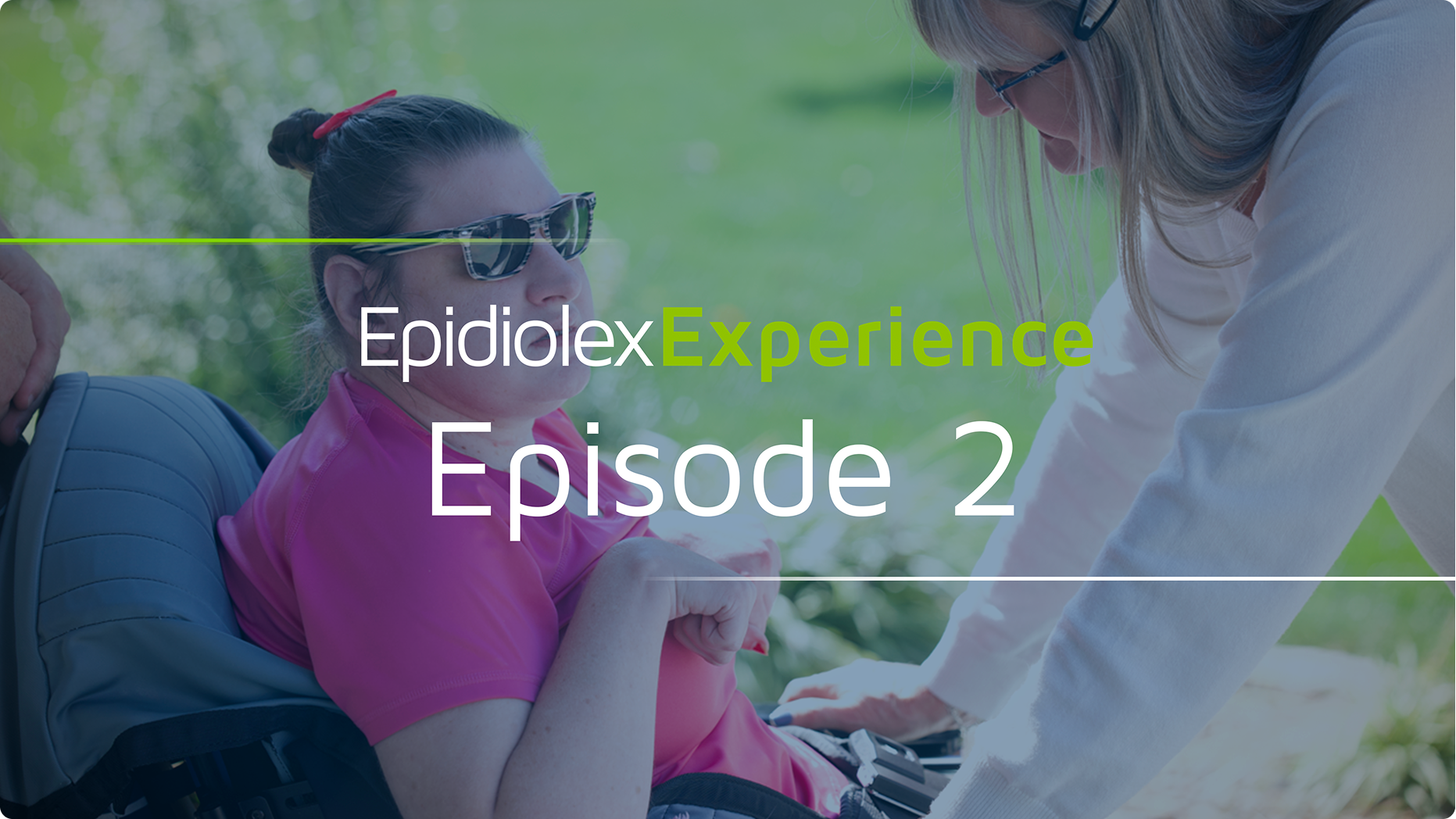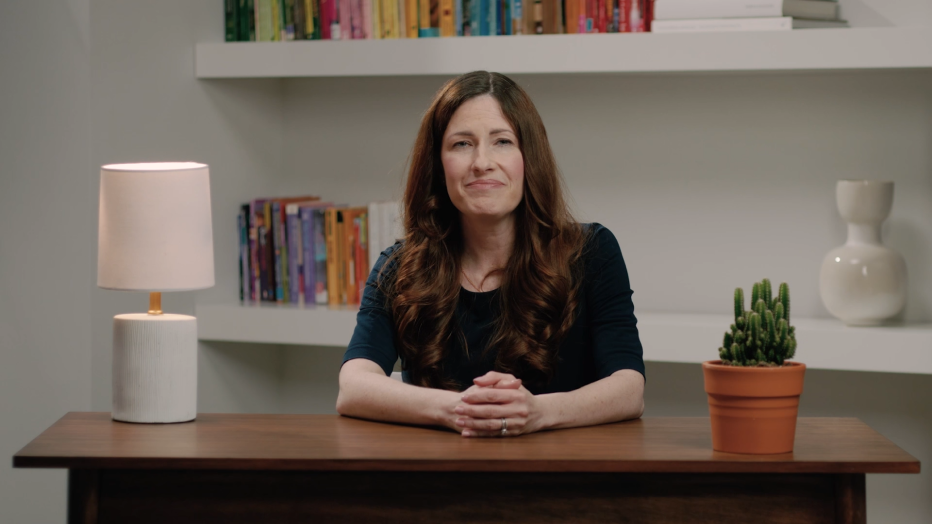Challenges of recognizing and diagnosing LGS
Lennox-Gastaut syndrome (LGS) is an epilepsy syndrome that can be challenging to detect and diagnose, particularly in adults. Onset of initial symptoms (falls, generalized seizures, mental slowing, and regression) typically occurs between the ages of 3 to 5; however, LGS can emerge over many years, and the condition persists into adulthood, with approximately 25% of LGS cases having no clear etiology.1,2
The “classic triad” of symptoms is often used for initial diagnosis in children3:
- Multiple seizure types
- Cognitive impairment
- Abnormal electroencephalogram (EEG) that typically has generalized slow spike-and-wave (SSW) discharges
However, ~50-75% of adult patients diagnosed with LGS during childhood no longer display all the clinical and EEG features used to typically diagnose the syndrome.4 LGS recognition and diagnosis in adult patients may be complicated by variable clinical presentation, as seizure types, seizure frequency, and characteristic EEG features may change over time.2-7
“EEG patterns like slow spike-and-wave and generalized paroxysmal fast activity (GPFA) can become less obvious and may not be identified,” says Dr. Rodney Radtke, Professor of Neurology at Duke University School of Medicine. “We tend to look for intellectual disability, but there are also higher functioning patients with LGS who can walk and talk, with only mild intellectual impairment.”
Dr. Bethany Thomas, Epilepsy Nurse Practitioner and Lead NP Clinical Coordinator for the Department of Neurology at the Hospital of the University of Pennsylvania adds, “We all know that the change in presentation of adult patients can be a challenge. These patients grow up and age out of pediatric centers. If they are not diagnosed as a child, recognition can become very murky.”
The evolving signs of LGS in young children vs adolescents and adults
Young children
Adolescents and adults
Seizure types
- Generalized tonic and atonic seizures, and typical absences1
- Tonic seizures during sleep1
- Generalized tonic-clonic and focal seizures may also occur1,5
- Generalized tonic-clonic and atonic seizures, and atypical absences5
- Tonic seizures present during sleep and may occur during wakefulness3
- Increase in drop attacks leading to injury5,6
Seizure frequency
- Daily to several times a week4
- Changing frequency; fewer daytime seizures in some patients3
EEG
- Pattern of SSW complexes7
- Decrease in/disappearance of SSW complexes, but other EEG abnormalities such as paroxysmal fast rhythms may be present3,6
Neurological issues
- Occurs early in childhood7
- Up to one-third of patients may show normal functioning at or prior to seizure onset7
- Up to 95% of patients may have cognitive impairment7
- Behavioral problems such as hyperactivity, aggression, and autistic traits are seen in 50% of patients with LGS1,2,8
- Motor impairment and gait deterioration may become more apparent4,6
Seizure types
Young children
- Generalized tonic and atonic seizures, and typical absences1
- Tonic seizures during sleep1
- Generalized tonic-clonic and focal seizures may also occur1,5
Adolescents and adults
- Generalized tonic-clonic and atonic seizures, and atypical absences5
- Tonic seizures present during sleep and may occur during wakefulness3
- Increase in drop attacks leading to injury5,6
Seizure frequency
Young children
- Daily to several times a week4
Adolescents and adults
- Changing frequency; fewer daytime seizures in some patients3
EEG
Young children
- Pattern of SSW complexes7
Adolescents and adults
- Decrease in/disappearance of SSW complexes, but other EEG abnormalities such as paroxysmal fast rhythms may be present3,6
Neurological issues
Young children
- Occurs early in childhood7
- Up to one-third of patients may show normal functioning at or prior to seizure onset7
Adolescents and adults
- Up to 95% of patients may have cognitive impairment7
- Behavioral problems such as hyperactivity, aggression, and autistic traits are seen in 50% of patients with LGS1,2,8
- Motor impairment and gait deterioration may become more apparent4,6
Although these clear signs exist, an adult patient’s full medical history, including pediatric EEGs with hallmark signs of LGS, may be incomplete or missing.
“One of the biggest challenges in detecting Lennox-Gastaut syndrome in adults is the lack of medical history,” says Dr. Radtke. “Frequently, patients arrive on the doorstep of group care facilities without all clinical information available.” To help compensate for gaps in medical history, Dr. Radtke suggests to “look for injuries, and use of a helmet. Many patients who fall repeatedly have tonic or atonic seizures, even if they aren’t labeled as such.”
Introducing REST-LGS: A Screening Tool for LGS
The refractory epilepsy screening tool for LGS (REST-LGS) was developed in 2019 by a team of epilepsy experts, including pediatric and adult epileptologists, to help improve identification of patients living with undiagnosed LGS.2 It is estimated that approximately 48,000 individuals may be living with LGS in the US, with a substantial number thought to be undiagnosed.9
“This was a population that no one was asking about before, even though we saw these patients in our clinical practice,” says Dr. Thomas, one of the co-creators of REST-LGS. In discussing the clinical motivation behind developing the tool, she recounts, “Many of these patients live with a refractory epilepsy diagnosis without further classification. Getting them a more specific diagnosis—that was the biggest unmet need, and still is.”
Dr. Thomas was among the panel who identified 4 major and 4 minor clinical criteria indicative of LGS based on their clinical experience.2 As part of the development of the tool, the screening criteria were tested by raters at 2 epilepsy centers.2 The major criteria are intended to reflect the “classic triad” of LGS, with the minor criteria helping to support and capture additional symptoms patients living with LGS may experience. Dr. Thomas adds that “when an adult patient presents to an office for the first time, there may be gaps in their history, like age of seizure onset. Our goal by including the minor criteria was to provide clues that can help fill in those missing puzzle pieces.”
EXPLORE FURTHER
For more information on the development of REST-LGS, watch our LGS Talks.
Based on how the screening tool is designed, 3 major and 2 to 3 minor criteria are suggestive of LGS.
The REST-LGS and major and minor criteria
Major criteria2
Minor criteria2
≥2 seizure types
Seizure onset at <12 years of age
History of EEG with generalized SSW discharges <2.5 Hz
Cognitive impairment since childhood
Persistent seizures despite trial of ≥2 antiseizure medications (ASMs)
History of vagus nerve stimulation (VNS), ketogenic diet, or epilepsy surgery
Evidence of seizure-related helmet use/head or face injuries
History of other EEG abnormalities
Major criteria2
≥2 seizure types
Seizure onset at <12 years of age
History of EEG with generalized SSW discharges <2.5 Hz
Cognitive impairment since childhood
Minor criteria2
Persistent seizures despite trial of ≥2 antiseizure medications (ASMs)
History of vagus nerve stimulation (VNS), ketogenic diet, or epilepsy surgery
Evidence of seizure-related helmet use/head or face injuries
History of other EEG abnormalities
A key feature of REST-LGS is its ability to be used by a variety of staff in clinical practice. Dr. Thomas notes that “what’s great is that you don’t have to be a neurologist to use it. A medical assistant, nurse, or nursing assistant can administer the tool. Each clinic runs a little differently, and I think this is adjustable for whatever the clinic’s practical flow is.” The ability for nonspecialists—who may be less familiar with specific epilepsy syndromes such as LGS—to utilize REST-LGS may be particularly impactful in settings such as long-term care as the tool can, as Dr. Thomas describes, “take the intimidation out of providing a syndromic epilepsy diagnosis. Long-term care providers can’t be specialists in every area. Using the tool and providing diagnoses opens up the possibility of using medications that are specific to those diagnoses.”
From her own experience using the tool, Dr. Thomas recounts, “A patient in our practice came in due to seizures after years of stability. We performed an EEG, and he had several abnormalities but not the classic SSW. But using the mentality of REST-LGS, we felt confident in this diagnosis of LGS.” The impact the diagnosis had on the patient and his caregivers was powerful. The diagnosis helped this patient’s family access new resources, including the LGS Foundation, and emotional support to connect with people in similar circumstances, highlighting the impact it can make on a patient’s quality of life.
“They finally had a name for his condition, and that opened up different levels of support. He was treated with medication that was specifically tailored to his syndrome.”
— Dr. Bethany Thomas
REST-LGS in clinical practice: the importance of an accurate diagnosis
Accurate diagnosis of LGS can help patients and caregivers access appropriate treatment and set expectations for planning future care.5 The REST-LGS tool is simple, easy to use, and has wide applicability in a variety of care settings, from traditional epilepsy centers to group homes and long-term care facilities.2 The tool helps keep top of mind the range of clinical criteria that may indicate LGS, particularly for adult patients.2
Dr. Radtke agrees that the tool “rings true with how I look at patients who present to me in adulthood. Lifelong cognitive issues and multiple seizure types are generally present in many patients with LGS in adulthood.” These symptoms, among others, are reflected in the criteria of the tool, and most patients in the REST-LGS study who met 3 major criteria and 2 to 3 minor criteria had a confirmed diagnosis of LGS.2 It is important to note that the REST-LGS tool on its own does not provide a diagnosis and should be used in combination with one’s clinical judgment.2
A delayed or nonspecific diagnosis can result in suboptimal treatment, which could deprive the patient of a chance for better seizure control and increase the risk of adverse events. Describing his own experiences in group facilities, Dr. Radtke describes how he has “patients in group homes for whom we don’t have their histories, limited EEG information, but we have the hints and evidence of multiple seizure types, and intellectual disability.” An accurate diagnosis of LGS is important for effective treatment and management of patients.5
“Making an LGS diagnosis can translate into a big difference in how we treat these patients. This gives us the opportunity to utilize treatments proven to work for LGS, and we have many more options than we did 20 years ago.”
— Dr. Rodney Radtke
References
- van Rijckevorsel K. Treatment of Lennox-Gastaut syndrome: overview and recent findings. Neuropsychiatr Dis Treat. 2008;4(6):1001-1019.
- Piña-Garza JE, Boyce D, Tworek DM, et al. The refractory epilepsy screening tool for Lennox-Gastaut syndrome (REST-LGS). Epilepsy Behav. 2019;90:148-153.
- Ferlazzo E, Nikanorova M, Italiano D, et al. Lennox-Gastaut syndrome in adulthood: clinical and EEG features. Epilepsy Res. 2010;89(2-3):271-277.
- Kerr M, Kluger G, Philip S. Evolution and management of Lennox-Gastaut syndrome through adolescence and into adulthood: are seizures always the primary issue? Epileptic Disord. 2011;13(suppl 1):S15-S26.
- Arzimanoglou A, Resnick T. All children who experience epileptic falls do not necessarily have Lennox-Gastaut syndrome... but many do. Epileptic Disord. 2011;13(suppl 1):S3-S13.
- Oguni H, Hayashi K, Osawa M. Long-term prognosis of Lennox-Gastaut syndrome. Epilepsia. 1996;37(suppl 3):44-47.
- Arzimanoglou A, French J, Blume WT, et al. Lennox-Gastaut syndrome: a consensus approach on diagnosis, assessment, management, and trial methodology. Lancet Neurol. 2009;8(1):82-93.
- Bourgeois BF, Douglass LM, Sankar R. Lennox-Gastaut syndrome: a consensus approach to differential diagnosis. Epilepsia. 2014;55(suppl 4):4-9.
- How many people have LGS? LGS Foundation. Updated February 28, 2024. Accessed March 7, 2024. https://www.lgsfoundation.org/about-lgs-2/how-many-people-have-lgs/
This monograph is sponsored by Jazz Pharmaceuticals and was developed with input from Dr. Rodney Radtke and Dr. Bethany Thomas, who have been compensated for their time.
Want to explore more on LGS?







